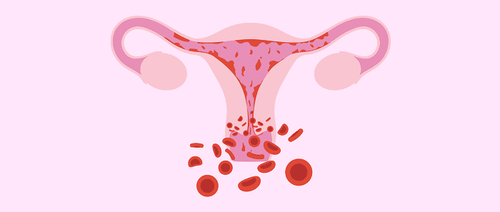This is an automatically translated article.
The article was professionally consulted by an Anesthesiologist - General Surgery Department - Vinmec Nha Trang International General Hospital.Total hysterectomy is often indicated when the patient has uterine diseases that other treatments are not effective. Endotracheal anesthesia is a general anesthetic used to control breathing during laparoscopic total hysterectomy.
1. Laparoscopic total hysterectomy in which case?
The uterus is one of a woman's most important reproductive organs. This is where the fertilized egg attaches and where the fetus will grow and develop during pregnancy. With a total hysterectomy, a woman loses her fertility. Therefore, a total hysterectomy is only performed when other treatments are ineffective and the hysterectomy is necessary to protect the patient's health and life. Total hysterectomy is usually indicated in the following cases:Menorrhagia, heavy bleeding, ineffective medical treatment Endometrial hyperplasia, ineffective medical treatment, Uterine fibroids, Cervical damage: CIS, CIN II, CIN III Endometrial cancer in early stage After abortion of the egg, there are indications for hysterectomy Due to many advantages such as less invasiveness, less postoperative pain, quick recovery, surgery. Laparoscopic hysterectomy is increasingly being performed as an alternative to open laparotomy as in the past. To perform a laparoscopic hysterectomy, the doctor will make small incisions in the abdomen, insert a camera and surgical instruments inside to perform a hysterectomy. The removed uterus is placed in a small bag and brought out through an abdominal or vaginal incision.
Anesthesia is an important step taken before surgery, in order to make the patient lose sensation, lose reflexes, and temporarily lose consciousness. Endotracheal anesthesia is the technique of general anesthesia with endotracheal intubation performed in most cases of laparoscopic total hysterectomy.

Cắt toàn bộ tử cung được chỉ định trong trường hợp u xơ tử cung
2. Endotracheal anesthesia laparoscopic total hysterectomy
2.1. Point
Laparoscopic total hysterectomy is indicated in the following cases:Laparoscopic total hysterectomy because of pathology of the uterus Difficult airway management with a mask Maintain anesthesia with Inhalation anesthesia This is a difficult technique and should not be performed if the medical facility does not have adequate anesthesia and resuscitation facilities or the medical staff is not qualified.
2.2. Prepare
To perform endotracheal anaesthesia, laparoscopic total hysterectomy requires an anesthesiology team including doctors and nurses specializing in anesthesiology.Regarding the means of implementation, it is necessary to have:
Anesthesia system with breathing apparatus, hand-held oxygen source, a vital function monitor (ECG indicators, arterial blood pressure, SpO2, EtCO2, breathing rate, temperature). ), suction machine, defibrillator,... Laryngoscope, endotracheal tube of all sizes, suction tube, mask, squeeze balloon, oropharyngeal cannula, Magill pliers, soft mandrin. Lidocaine 10% spray Salbutamol spray Difficult intubation equipment: Cook tube, laryngeal mask, flexible bronchoscope, tracheostomy kit, mouth opener,... need to be prepared for use when necessary. To prepare for endotracheal anesthesia, the patient will be examined and evaluated by the doctor to prevent the risk of possible complications. The patient will also be evaluated for difficult intubation if necessary. In some cases, patients will be sedated from the night before surgery.
2.3. Steps to perform endotracheal anesthesia laparoscopic total hysterectomy
PreparationThe patient is instructed to lie on his back on the operating table, covered with a warm blanket, the anesthetist team gives the patient 100% oxygen with a flow rate of 3-6 liters/minute at least 5 minutes before the induction of anesthesia. The team installed a vital signs monitor with EtCO2 parameters during laparoscopic surgery, then established the transmission line. Perform pre-anesthesia with fentanyl 100mcg (and Midazolam 1-2mg if needed).
Induction of anesthesia
Anesthesia induction is carried out with the following drugs:
Sleeping pills: use one of the drugs such as intravenous general anesthetics (propofol, etomidat, thiopental, ketamine,...), anaesthetic. vapors (seofluran, Isoflurane,...) Pain relievers: sufentanil, fentanyl, morphine,... Muscle relaxants (if needed): rocuronium, vecuronium, succinylcholine,... Use H2-receptor antagonists and Metoclopramide to prevent prevent reflux of gastric juice into the airways. Oral endotracheal intubation
After the patient is in deep sleep and has enough muscle relaxation, the anesthesia team will perform oral endotracheal intubation. Steps to be taken include:
Perform rapid induction of anesthesia and the Sellick maneuver (pressing the cricoid cartilage just before the patient loses consciousness until the intubation is complete) in case the stomach is full. Open the patient's mouth, one hand of the doctor is placed under the neck to keep the neck straight, the other hand brings the laryngoscope to the right side of the mouth, moves the tongue to the left, inserts the light deeply (in coordination with the cricoid cartilage if necessary) to find the epiglottis and glottis. The doctor inserts the endotracheal tube gently through the glottis, stopping when the balloon of the endotracheal tube passes 1-2cm through the vocal cords. Gently withdraw the laryngoscope, then inflate the endotracheal balloon. The doctor will listen to the lungs and see the EtCO2 results to check if the endotracheal tube is in the right position, if the ventilation is good, if it is in the right position, fix the tube with adhesive tape and put the canul in patient's mouth to avoid biting the tube (if necessary). The anesthesiology team will switch to a difficult intubation procedure if the above procedure is unsuccessful.
Maintain anesthesia
During laparoscopic total hysterectomy, the patient is maintained under anesthesia with:
Intravenous or volatile anesthetics, analgesics, muscle relaxants (if necessary) . The depth of anesthesia will be closely monitored based on parameters such as heart rate, blood pressure, sweating, tearing (PRST); MAC, BIS, Entropy, SPI (if any). The patient's breathing is controlled by an anesthetic machine that helps to breathe completely with different parameters and modes depending on the patient and accompanying medical conditions. Vital signs such as heart rate, blood pressure, SpO2, EtCO2, body temperature... are closely monitored, continuously until the end of surgery, the patient is fully awake, without complications. Criteria for extubation
After the laparoscopic total hysterectomy is completed, the endotracheal tube is removed when the patient is awake, breathing spontaneously, breathing rate is within normal limits, and blood pressure is stable determined. The patient did not have residual muscle relaxant, was able to raise his head on his own for more than 5 seconds, TOF > 0.9, body temperature > 35oC, arterial blood gas parameters within normal limits (if any) and no complications of stroke. anesthesia as well as surgery.

Tiến hành gây mê nội khí quản phẫu thuật nội soi cắt toàn bộ tử cung
3. Possible complications in endotracheal anesthesia for total hysterectomy and how to handle it
3.1. Hemodynamic disorders
During endotracheal anesthesia for laparoscopic total hysterectomy, the patient may experience hypertension, hypotension or cardiac arrhythmias such as bradycardia, tachycardia, etc. Depending on the specific symptoms and causes, the doctor will have appropriate treatment.3.2. Reflux of gastric juice into airway
If detecting that the patient has digestive juices in the oral cavity and airways, the anesthesia team will immediately drain the digestive juices, let the patient lie down with his head low and tilt his head to the side. Place the endotracheal tube quickly and clear the airway.3.3. Possible complications due to intubation
Intubation is not possible: the team will switch to a difficult intubation procedure or switch to another method of anesthesia. Misplaced endotracheal tube into the stomach: the anesthesia team will re-insert the endotracheal tube. Constriction of the larynx-trachea-bronchi: provide adequate oxygen, add sleeping pills and muscle relaxants to the patient, ensure ventilation and give bronchodilators, corticosteroids. If breathing is still not controlled, the anesthesia team will apply a difficult intubation procedure. Trauma during endotracheal intubation: injuries may occur during intubation such as bleeding, tooth fracture, vocal cord damage, foreign object falling into the airway,... Depending on the injury For specific injuries, the doctor will have appropriate treatment.3.4. Respiratory complications
The endotracheal tube can be folded, retracted, pushed deep into a lung, dropped or opened the respiratory system, running out of oxygen sources, ineffective soda, ... causing hypoxia, hypercapnia. The anesthesiologist team will immediately ensure ventilation, provide 100% oxygen and address the cause.3.5. Complications after extubation
After extubation, patients may experience complications such as laryngotracheal-bronchospasm, sore throat hoarseness, upper respiratory tract infection, laryngotracheal stenosis, respiratory failure due to drug residues. muscle relaxation, pain... The doctor will treat according to the symptoms and causes.3.6. Complications in endoscopy
In addition to the possible complications due to endotracheal anesthesia, the patient may also experience complications due to laparoscopic total hysterectomy such as air embolism, subcutaneous emphysema, pneumothorax, effusion. mediastinal gas, cardiac arrhythmias due to hypercapnia, vascular wounds, perforation of hollow viscera causing peritonitis,... Laparoscopy with Trenderlenburg position, patients will increase the risk of atelectasis, decrease lung compliance, and decrease blood flow. visceral blood volume.To prevent the above-mentioned complications, the surgical team will monitor the anthrax through Capnography, EtCO2 should not exceed 50mmHg; CO2 pump pressure will be controlled at 8-12mmHg; During laparoscopy with Trenderlenburg, the head should not be lower than 15 degrees. Closely monitor the patient for timely detection and management of atelectasis, subcutaneous emphysema, pneumomediastinum, internal bleeding due to perforation of the uterus or the wrong path of the laparoscope,...
Vinmec International General Hospital with a system of modern facilities, medical equipment and a team of experts and doctors with many years of experience in medical examination and treatment, patients can rest assured to visit. examination and treatment at the Hospital.
Please dial HOTLINE for more information or register for an appointment HERE. Download MyVinmec app to make appointments faster and to manage your bookings easily.













